Sou Fujimoto x COS
Milan
On the occasion of the Salone del Mobile in Milan, COS released their collaboration with Japanese architect Sou Fujimoto with their space entitled Forest of Light. Numbers Light Cones enlighten intermittently from above COS pavilion therefore forming a dance of light. COS collaboration with Sou Fujimoto marks the brand’s fifth year installation at the Salone del Mobile.
Wertical had the honor to sit down and talk with both the architect and COS designers Karin Gustafson and Martin Andersson.
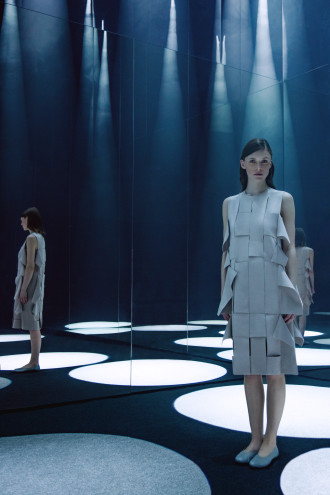
Wertical: Both you and Sou Fujimoto work with the same minimalist line. Do you consciously search for collaborators with similar aesthetics? What is the criteria for you?
Karin Gustafsson: At COS we constantly look to the fields of architecture and design to find shape, texture, colour and feel that our customers share a culturally aware mindset. So when looking for collaborators we want there to be an organic connection to the brand. We first came into contact with Mr Fujimoto’s work after his amazing design for the Serpentine Gallery pavilion in 2013 and have used his work as a reference point since – it just felt like a natural collaboration for Salone del Mobile this year. It has been great working together.
Martin Andersson: We are always looking to collaborate with the people that we turn to for inspiration, and with whom we share the same values and aesthetics. Here Mr Fujimoto has created an immersive and inspired installation which fits the COS philosophy well.
WE: Is Forest of Light inspiring the philosophy of your work, thus upcoming collections?
KG: Mr Fujimoto has been a reference point for COS for some time. His modern view on design is inspiring through always questioning the fundamental and natural whilst looking into the contemporary way of life. The Forest of Light concept is something we will be inspired by for collections to come.
WE: What does fashion mean for you?
Sou Fujimoto: Fashion and architecture both have a key relationship with human beings and are an integral part of society. I think it is important for both to have functionality and purpose for the intended use.
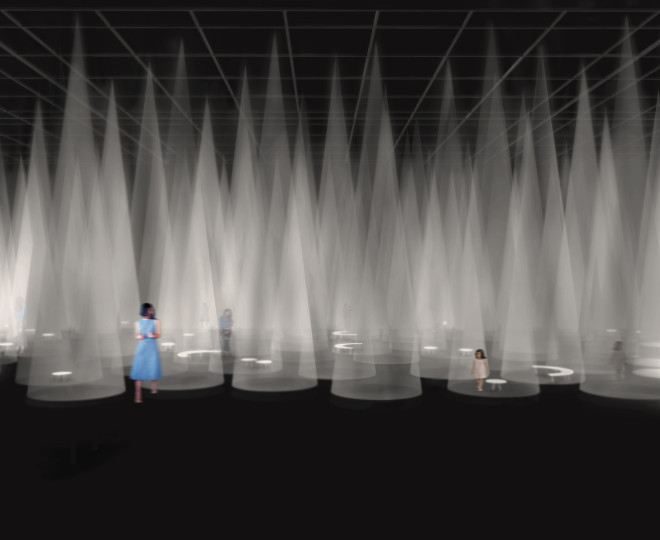
WE: Did fashion get a new significance for you since collaborating with COS?
SF: COS and I both share a desire to create something simple and clean, yet special. This collaboration made me think about a different approach to architecture by wanting to incorporate the COS elements of transparency and delicacy and also more bold inclusive elements.
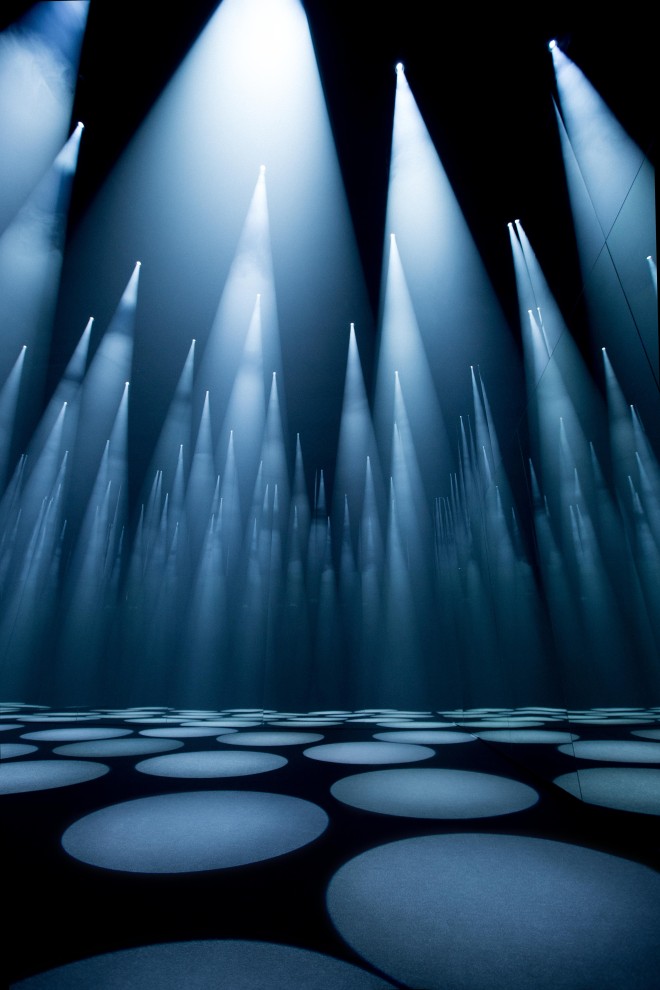
WE: Which similarities do you see in fashion and architecture?
SF: We really have a similar starting point, but at the same time there is a certain distance between fashion and architecture. Both fashion and architecture are everyday requirements of life, with everybody coming into contact with both each day. It seems that there are similarities between both through a shared aesthetic especially with modern functional design.
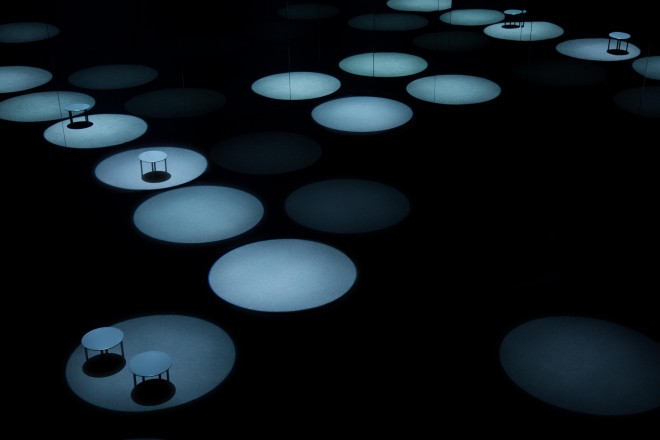
WE: As an architect you are used to work with tangible material. Yet the light that you use for the installation is the ultimate intangible artefact, how did you come up with the idea?
SF: I wanted to make something that linked the two disciplines of fashion and architecture in a new way that was not obviously either. Light itself is a simple yet pure material which although is intangible can create a rich and diverse structure which also enabled this installation to be highly interactive and immersive.
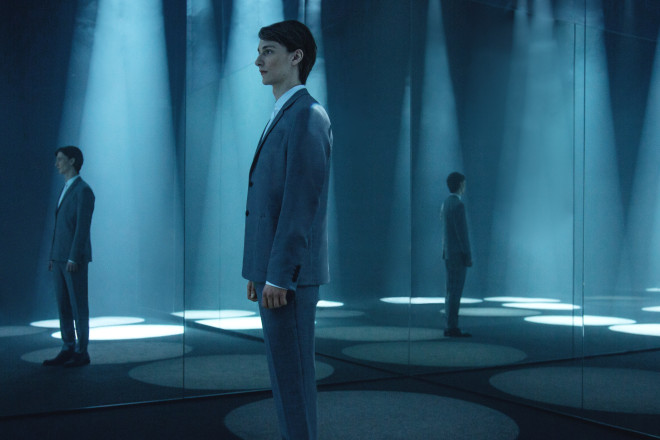
WE: The installation is entitled Forest of Light, what is it about?
SF: This installation is a completely new realisation of the forest for me, by only using light. The concept of Forest is one I have always been fascinated with since being a boy in rural Japan then moving to the architectural forest of Japan. I see forests as a place where people interact, take time and behave more naturally and in essence the basic archetype for our living environment. The concept for me is continuously evolving and developing, which is also referenced in the Forest of Light, through the interaction of the lights and integrated sounds to create the diverse realisation of the forest.
Archive
- Dezember 2016 (1)
- Oktober 2016 (3)
- September 2016 (24)
- Juli 2016 (20)
- Juni 2016 (24)
- Mai 2016 (18)
- April 2016 (18)
- März 2016 (21)
- Februar 2016 (11)
- Januar 2016 (20)
- Dezember 2015 (20)
- November 2015 (37)
- Oktober 2015 (30)
- September 2015 (24)
- August 2015 (4)
- Juli 2015 (30)
- Juni 2015 (9)
- Mai 2015 (17)
- April 2015 (23)
- März 2015 (18)
- Januar 2015 (8)
- Dezember 2014 (1)
- November 2014 (3)
- Oktober 2014 (10)
- September 2014 (4)
- August 2014 (2)
- Juli 2014 (3)
- Juni 2014 (2)
- Mai 2014 (5)
- April 2014 (11)
- März 2014 (12)
- Februar 2014 (13)
- Januar 2014 (10)
- Dezember 2013 (5)
- November 2013 (13)
- Oktober 2013 (24)
- September 2013 (18)
- August 2013 (26)
- Juli 2013 (13)
- Juni 2013 (35)
- Mai 2013 (44)
- April 2013 (49)
- März 2013 (61)
- Februar 2013 (54)
- Januar 2013 (46)
- Dezember 2012 (50)
- November 2012 (58)
- Oktober 2012 (62)
- September 2012 (61)
- August 2012 (63)
- Juli 2012 (64)
- Juni 2012 (61)
- Mai 2012 (63)
- April 2012 (51)
- März 2012 (67)
- Februar 2012 (37)



